What We Did This Summer: SIS Students, Faculty, and Staff Share
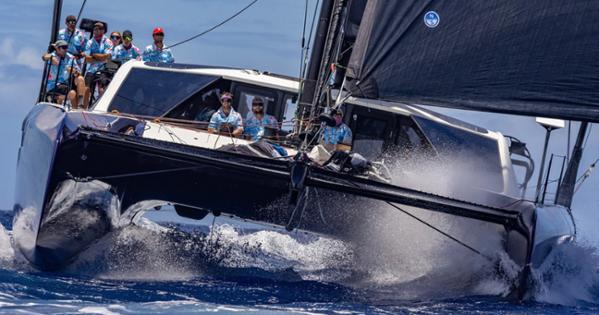
The summer provides a unique chance for many of our SIS students, faculty, and staff to pursue opportunities that complement their academic, professional, and research interests. During summer 2025, our SIS community members traveled far and wide around the globe, completed internships and classes, and pursued opportunities that enhanced their professional development. We asked several members of our SIS community to offer brief reflections on their wide-ranging experiences this summer.
- Anthony Avice Du Buisson, SIS/MA ’26
- Ava Wilson, SIS/MA ’27
- Carlton Wheeler, SIS/BA ’26
- Emily Chavez, SIS/BA ’28
- Erica Jones, SIS/MA ’26
- Hansong Li, SIS professor
- Jeanne Guerrero, SIS staff
- Samantha Bradshaw, SIS professor
- Stephen Tankel, SIS professor
 Anthony Avice Du BuissonSIS/MA ’26
Anthony Avice Du BuissonSIS/MA ’26
I spent the summer writing articles, publishing a policy paper, and being featured in an interview. I published two articles for the Jerusalem Post (JPost), a policy paper for the New Lines Institute for Strategy and Policy, and was the focus of an interview for the Kurdistan Chronicle, a Kurdish affairs magazine. Leveraging vital skills learned during classwork and time spent as a Mustafa Barzani Peace fellow at the SIS Global Kurdish Initiative for Peace, I used these skills to craft analyses and write papers on Middle Eastern security and humanitarian issues.
One class at SIS gave me the building blocks to publish a policy paper this summer. Professor Keith Darden’s Special Studies in International Politics: State-Building (SIS 619) class gave me the opportunity to write a policy paper as the final assessment. I used the skills I developed during the writing process to get the final paper that examined the effectiveness of US security policy in northeast Syria under Operation Inherent Resolve published. I connected with New Lines Institute fellow Caroline Rose, whom I met at an SIS event in March, and collaborated with the Institute’s editorial team to get the policy paper published.
I operate with a simple ethos: take hold firmly of every opportunity that presents itself. Always strive to capture the energy of the moment and channel it into something worth fighting for. This is what I did during the summer; I took the fire of ambition and fused it with my passion for informed security and humanitarian analysis to create meaningful contributions. SIS facilitated this process by connecting me both with experts and peers that fuel my career aspirations. What I learned is that these connections and the practical experience you foster are essential. Take the assessment items that you create for class and incorporate the professor’s feedback and suggestions to improve on your work. Seek out faculty advice to then go to the next step and get the item published. Let your work have life outside the classroom.
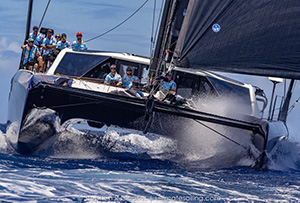 Ava WilsonSIS/MA ’27
Ava WilsonSIS/MA ’27
This summer, I raced in the 2025 Transpac. The Transpac is a 2,200 nautical mile non-stop sailing race from Los Angeles to Hawaii. The boat I raced on is Gunboat, Convexity2. The boat is a racer cruiser 68-foot catamaran. There were 13 crew members on board, and I was the only female. The race took us seven days and two hours to complete. The boat was operated by hydraulic systems and was equipped with a Starlink. This experience was unlike anything I've ever done. To be so isolated in the middle of an ocean for days is an unexplainable feeling. Some of the biggest takeaways include the ongoing environmental impact on our oceans, the power of cutting-edge sailing, and the importance of teamwork under pressure. Unfortunately, while racing we hit two separate fishing nets. It was a stark reminder of the unseen hazards that litter the world's oceans and the growing issue of marine debris. More than just a tactical setback, it shifted our mindset—reinforcing the need for vigilance, quick problem-solving, and respect for the complex, often fragile, environment we sail through. The SIS program emphasizes policy analysis, global collaboration, and innovative problem-solving in complex environments. Much like the Transpac, where success depends on understanding shifting winds, reading currents, and anticipating obstacles, international affairs requires navigating dynamic global systems with foresight and agility. The race also reinforced for me the importance of diverse perspectives: I was the only woman on my crew, a reminder of the need to expand representation—a value that SIS actively fosters in its mission to prepare students for inclusive leadership.
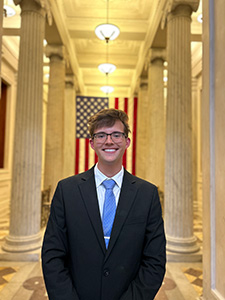 Carlton WheelerSIS/BA ’26
Carlton WheelerSIS/BA ’26
This summer, I interned for Congressman Joe Wilson, where I continued to gain experience working on domestic and foreign policy issues. I assisted the staff in research, drafting memos, and handling constituent concerns. Previously, my experience has been with campaigns and in House leadership, so interning for a personal office gave me the necessary insight into how members balance local needs with pressing national and global issues. Outside of my internship, I took two courses over the summer to satisfy my Habits of Mind requirements, and worked at the SIS Hub office, helping faculty and staff move and get ready for the next semester.
My experience with Congressman Wilson this summer was strengthened by the foundation I built at AU's School of International Service. The coursework and classroom discussions gave me the necessary analytical tools to approach complex issues while retaining the confidence to contribute meaningfully in a professional setting. This experience, combined with my academics, will help me greatly as I begin my next internship in the fall with the Speaker of the House and graduate shortly after.
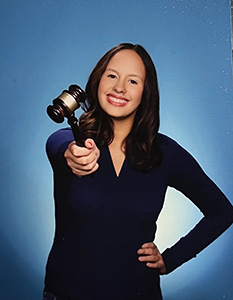 Emily ChavezSIS/BA ’28
Emily ChavezSIS/BA ’28
This summer, I had the honor of being one of five research interns for the International Center for Religion and Diplomacy (ICRD). In this position, we tackled several research projects that spanned all around the globe. As interns, we focused heavily on bridging the disconnect between Indo-Guyanese and Afro-Guyanese populations, the role of social media in the intersectionality of masculinity and faith, and the impacts of the Dakota Access Pipeline on the Standing Rock Sioux Tribe in North Dakota. After seeing the process of how these project proposals were crafted, we were then challenged to create our own project proposals which we presented to the ICRD board. My project proposal was about youth reconnection to Catholicism through charitable works and social justice.
With ICRD being such a small team, I had the opportunity to learn from every member of the board, and I learned about the ins and outs of new project development. I learned about the importance of narrative, context, and risk analysis, the effectiveness of social media, and how to effectively take research and translate it to achievable goals and objectives. It was also great to learn about how organizations intersect with religion and diplomacy, two very big parts of my life. I can’t wait to take the lessons I learned at ICRD into future employment opportunities.
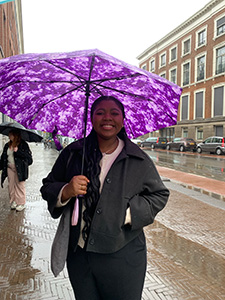 Erica JonesSIS/MA ’26
Erica JonesSIS/MA ’26
This summer, I spent two weeks in The Hague, Netherlands, exploring the impact of international criminal law and examining the inner workings of the International Criminal Court (ICC). Before leaving, we had two classes establishing a foundational understanding of the Court’s organization and processes before spending our time in The Hague meeting with court officials, legal experts, and supportive NGOs such as the Mukwege Foundation and the International Federation for Human Rights. We also visited the ICC in person to meet with Tomoko Akane, President of the Court, along with the chairman of the presidency’s cabinet.
Outside of meetings, we visited the University of Amsterdam and Nijmegen School of Management at Radboud University to meet with students and faculty to engage in lessons on Dutch foreign policy, ‘Just War’ theory, and international law. This interactive cross-university experience facilitated meaningful academic dialogue that offered valuable insights into the Netherlands’ and the United States’ role on the global stage.
Our cohort also dedicated ample time to learning about Dutch arts and history. Touring the city, we spent our free days roaming the Noordeinde Palace gardens, visiting the Rijksmuseum and Anne Frank House in Amsterdam, taking history lessons at the Peace Palace, and even touring the Prison Gate Crime and Punishment Museum, located next to the scenic Hofvijver lake across from the Binnenhof Parliament building.
Situated in the South Holland province of the Netherlands, The Hague displayed more than a picturesque landscape. This study abroad opportunity provided an experience rich in academic growth and cultural immersion. Surrounded by international institutions like the ICC and the International Court of Justice, I gained firsthand exposure to global governance and diplomacy while engaging with peers from diverse backgrounds. While only there for two weeks, this trip deepened my appreciation for cross-cultural understanding and expanded my perspective on international affairs.
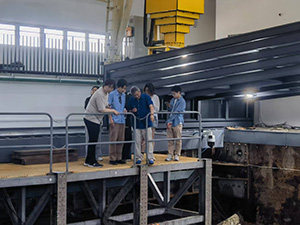 Hansong Li SIS professor
Hansong Li SIS professor
On July 4, 2025, I visited the mysterious “Yangtze Estuary II,” a colossal sand-ship dated to the Tongzhi period (1856–1875) that sank right outside Shanghai, as it sailed into the Pacific. Since the big boat was lifted out of the seabed in 2022 thanks to cutting-edge underwater archaeological techniques, scholars have been debating its ownership, sea routes, and missions. Granted intimate access to the ship, I perused the Jingdezhen potteries of varying qualities, found swords that sailors must have kept for self-defense, and puzzled over a few logs with random characters. I also spotted a Rowland’s Macassar Oil bottle [AZ1] and a Vietnamese hookah water pot, showing that the sailors used British and Vietnamese products and might have travelled longer distances than thus far attributed to sand-ships, vessels primarily known for superior navigation of the shallower waters of Northeast Asia. Seeing these materials up close helped me revise my book manuscript on what I call a ‘global microhistory’ of a sand-shipping family in Shanghai, who filled many socioeconomic voids left by an ailing imperial government, steering not only urban design but, eventually, reforms and revolutions. At the end of the day, much of “Yangtze Estuary II” remains in the dark, but hopefully more details will emerge to tell a fuller story about the sailors and the world they traversed.
Jeanne Guerrero SIS staff
This summer, I had th e privilege of directing the Community of Scholars program at American University, where I led a cohort of high school students through an intensive two-week exploration of international relations, diplomacy, and global citizenship. A highlight of the program was moderating a panel at the British Embassy, featuring distinguished embassy speakers Josh Stanton (SIS/MA ’12), Mitchell Monreal, and Alexa Mitchell, who shared their expertise in strategic communications, trade policy, and transportation.
e privilege of directing the Community of Scholars program at American University, where I led a cohort of high school students through an intensive two-week exploration of international relations, diplomacy, and global citizenship. A highlight of the program was moderating a panel at the British Embassy, featuring distinguished embassy speakers Josh Stanton (SIS/MA ’12), Mitchell Monreal, and Alexa Mitchell, who shared their expertise in strategic communications, trade policy, and transportation.
The students engaged deeply with the panelists, asking insightful questions and connecting classroom concepts to real-world applications. Their participation underscored the program's impact in fostering critical thinking and leadership skills among the next generation of global changemakers.
This experience reaffirmed my commitment to empowering young minds to navigate and influence the complex global landscape, preparing them to become informed, compassionate leaders in an interconnected world.
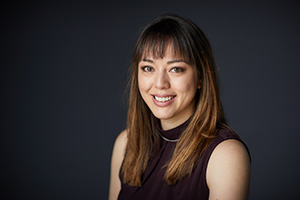 Samantha Bradshaw SIS professor
Samantha Bradshaw SIS professor
This summer, I advanced a new research project on the rise of “dark LLMs”—large language models marketed specifically for malicious use on cybercriminal marketplaces. My work examines how threat actors are adapting generative AI tools to create malware, craft customized phishing campaigns, and even produce content for scams and other illicit activities.
I have long researched the intersection of technology, security, and governance, and this project builds on my expertise by focusing on how AI is reshaping the cybercrime ecosystem. In particular, my team is mapping the presence of dark LLMs, building a typology of their intended uses, and assessing how these tools could transform criminal operations.
Reflecting on this research, I am observing that the professionalization of cybercrime—through ransomware-as-a-service, exploit marketplaces, and now dark LLMs—underscores how accessible and scalable digital crime has become. I emphasize that the importance of systematic evidence: “While there is hype around AI-enabled crime, we need better data to understand the real risks and how to respond.”
My work will contribute not only to AI safety debates but also to strengthening law enforcement and private sector defenses. Looking ahead, I plan to publish my findings to inform governance frameworks and build resilience against the risks posed by AI-driven cybercrime.
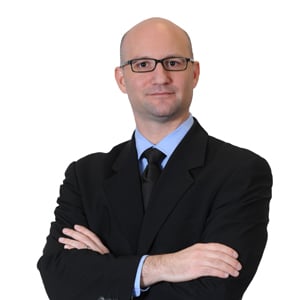 Stephen Tankel SIS professor
Stephen Tankel SIS professor
Practicums are an incredible opportunity for students to contribute to the US national security mission and to learn more about important topics and how government works in the process. This summer, the State Department tasked an American University class with conducting open-source research on the Chinese commercial space industry. Chinese commercial satellite companies are systematically integrated into Beijing’s civil-military fusion strategy, enhancing the People’s Liberation Army’s (PLA) intelligence, surveillance, and reconnaissance (ISR) capabilities and ability to operationalize space assets during conflict. The People’s Republic of China (PRC) also uses satellite exports, training, and subsidized launches to erode US industry competitiveness, build long-term dependencies in the Global South, and expand its diplomatic influence while challenging international space norms. For these reasons, the US is strengthening export controls, expanding investment screening, and enhancing public-private space partnerships. To support these efforts, students created a standardized template with company vitals and a risk assessment that assigned ratings for military, diplomatic, economic, and supply chain threats based on the severity and probability of risk.